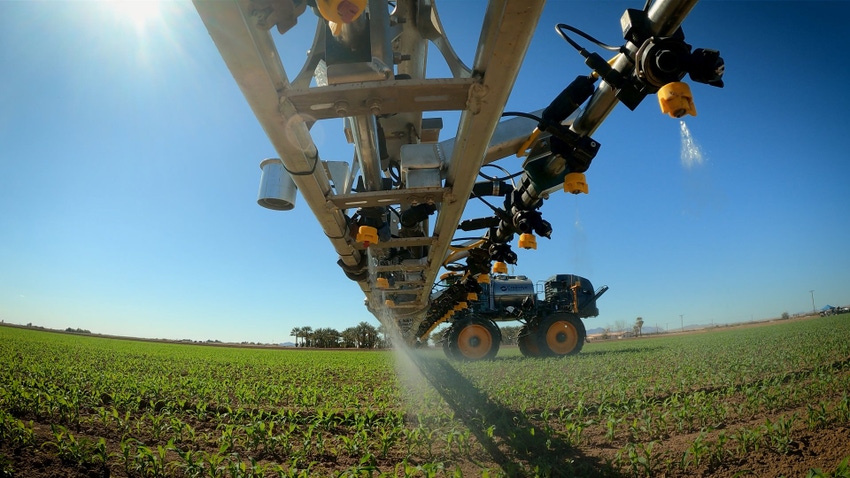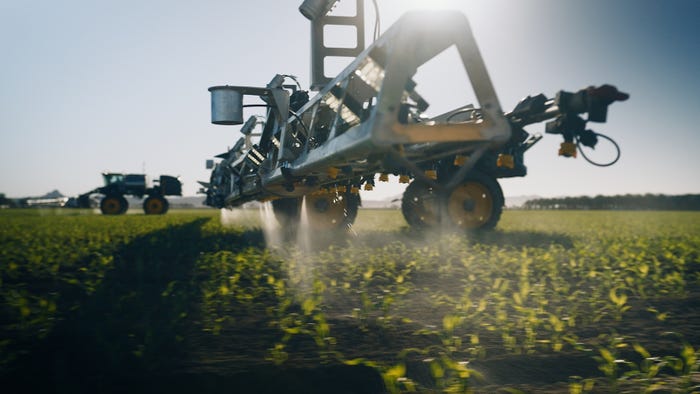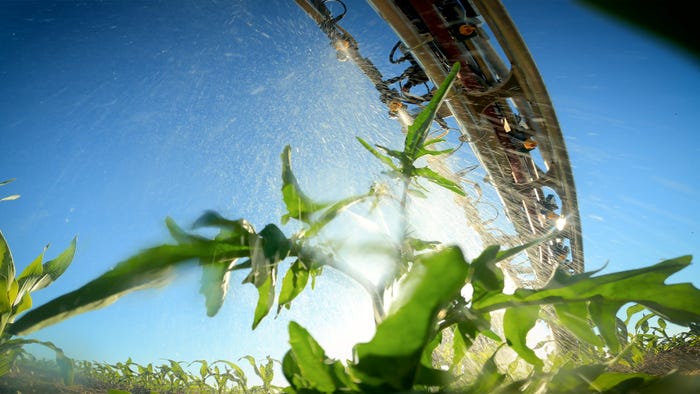September 1, 2023

The Janzen family has been farming its land in Henderson, Nebraska, for three generations. Today, it manages approximately 5,000 acres of irrigated soybean, corn and corn seed. Since joining the family business some 15 years ago, sprayer operator Brad Janzen has experienced first-hand the increasing challenges caused by herbicide resistance. While various steps taken by the family has meant it has been able to keep one step ahead of the weeds and increase yields year-over-year, Brad’s feeling is that production is not increasing as fast as it should be.
It is a scenario that is being played out in farms not just in Nebraska or the U.S., but worldwide. The overuse of chemicals – the result of the industry’s necessary reliance on broadcast application – has provided the perfection conditions for resistance, as well as several other environment challenges, such as soil and water pollution, to flourish. And these are not the only unpleasant side-effects of this common practice: using more chemicals than required puts a huge, unnecessary strain on farmers’ profitability.

Retrofit solutions enable farmers to quickly pivot from broadcast to precision application of chemicals using their existing sprayer. Photo submitted by Greeneye Technology
The first line of defense
When devising strategies to combat the effects of herbicide-resistance weeds, most farmers’ first line of defense is to increase the number of times they spray their fields each season. This approach can help to keep productivity on the rise, at least in the short term. However, it increases chemical costs considerably – something that is especially unpalatable right now as chemical costs remain high. At the same time there is no escaping the fact that this approach is effectively ‘feeding the beast’, meaning resistant weeds are likely to emerge at an even faster rate.
The next step, typically, is to trial more specialized inputs, as these face far less resistance in the field. While this approach is likely to achieve the desired result, cost can be an issue. These products tend to be too expensive when sprayed on a broadcast basis. Added to this, they also cause high levels of crop burn, a problem that can have far-reaching consequences due to another side-effect of broadcast spraying – chemical drift.
For a small number of farmers, moving to zero-chemical production is an option. Mechanical weeding devices offer a viable solution for specialist or organic producers. However, this technology will not work for row crops like soy, corn, and cotton, which require fast and extensive coverage to remain profitable.
New Tools to Tackle Weeds
The launch of the first commercially available precision spraying system in the U.S. last year marked an important turning point for farmers. The potential for precision spraying to significantly reduce herbicide use – and therefore resistance – has long been recognized. However, earlier technologies had failed to gain traction – either because they failed to deliver the necessary level of speed or accuracy, or they required farmers to invest in new spraying machines, making them prohibitively expensive. The latest generation of precision spraying technology overcomes these challenges. For example, retrofit solutions enable farmers to quickly pivot from broadcast to precision application of chemicals using their existing sprayer. Meanwhile, the ability to precisely spray very small sections of the field – measuring no more than 10” x 10” – ensures they deliver the high accuracy rate required by U.S. farmers.
For producers such as the Janzen family, precision spraying is proving to be a game-changer. An early adopter of the technology, the farm has cut its non-residual herbicide use by almost 95%, equating to a cost saving of around $25/acre, crucially achieved with no drop in efficacy compared to broadcast spraying. With the money it has saved, the farm is now able to invest in more efficacious inputs that were not affordable when sprayed on a broadcast basis. This is expected to deliver further improvements in weed control efficacy – helping to increase yields – and will play a major role in helping to overcome the threat posed by herbicide resistance.

Next gen technology will enable the precise application of a wide range of inputs including micronutrients and fungicides. Photo submitted by Greeneye Technology
Ag retailers leading the charge
Interestingly, it is not just farmers who are taking notice. Earlier this year, Farmers Business Network announced plans to sell precision spraying systems in conjunction with Precision Spraying Packs – combinations of crop protection, biologicals, and adjuvants. Similarly, NuWay-K&H Cooperative acquired a precision spraying system, which it is using to offer spraying-as-a-service to its members. Its goal is to enable farmers to “push the yield curve” by enabling them to free up capital which they can then invest in more complex tank mixes. As importantly, it believes the use of precision spraying will open the door to enabling farmers to work with major food manufacturers and retailers who are increasingly looking to partner with sustainable producers.
Another benefit highlighted by the retailer is the technology’s ability to collect ultra-high resolution data from the field that will help its customers to more effectively tackle challenges such as nutrient deficiencies and disease.
Investing in sustainable growth
This comment provides a tantalizing glimpse of precision spraying’s true potential. And it won’t be long before it is realized. Next generation technology – which is already in development – will enable the precise application of a wide range of inputs including micronutrients and fungicides. This promises to extend the benefits of precision spraying, both for farmers and the environment, far beyond herbicide reduction.
To find out more, visit Greeneye Technology at the Farm Progress Show (Booth 1239), or find them online at www.greeneye.ag.
You May Also Like





